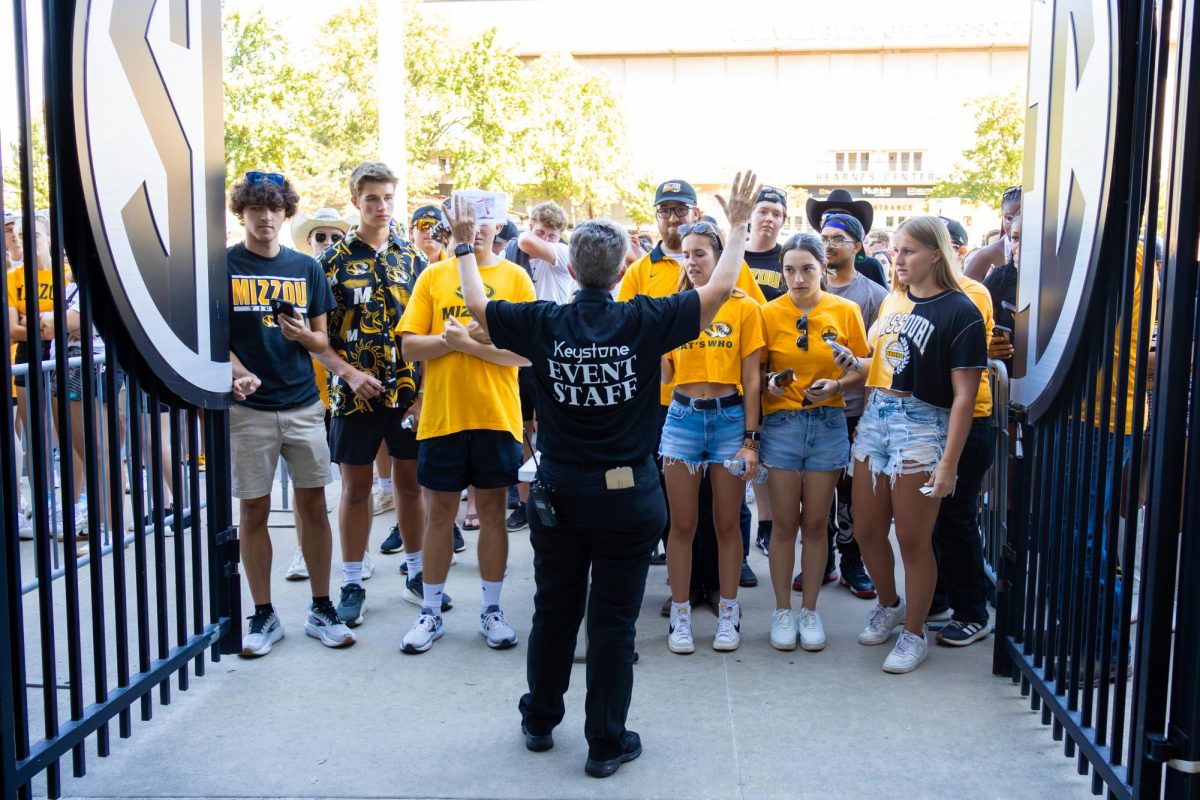They were only there to save buildings.
But that role shifted rapidly as the war dragged on, Sen. Roy Blunt, R-Mo., said in his speech last week at the State Historical Society of Missouri in Ellis Library.
“As it turned out, nobody had anticipated the thuggery and looting of the Nazis,” Blunt said.
And as a result, they — the members of the Monuments, Fine Arts and Archives program or, more simply, the “Monuments Men” — had saved more than 5 million paintings and sculptures by 1951, returning them to their original owners after a wave of wartime art theft by Nazi Germany.
The program was commissioned by President Franklin D. Roosevelt on the recommendation of then-Gen. Dwight Eisenhower in an effort to prevent Allied forces from bombing buildings that held something of cultural significance inside them.
“The Allies almost accidentally bombed … the Leaning Tower of Pisa,” Blunt said. “If there was a German anti-aircraft gun or something there, you might have decided, ‘Well, we’ve got to get rid of that gun.’ But we don’t want to just get rid of the Leaning Tower of Pisa just because we don’t know how to avoid doing it.”
At its height, the program included 350 Allied men and women, mostly Americans who, following the D-Day invasion in 1944, took to preserving European art and architecture that would have otherwise been lost or destroyed during combat. Of the original 350, 14 were from Missouri or worked in Missouri. Two, Hellmut Lehmann-Haupt and Lewis Williams, served as professors at MU, and others went on to direct the Nelson-Atkins Museum of Art in Kansas City.
Today, only six members of the original corps survive; two were killed in action. None of the living members are Missourians. That urgency led Blunt to sponsor a bipartisan resolution that would award the Congressional Gold Medal to all 350 Monuments Men.
“It’s important to look for opportunities to remind ourselves of who we are and how we got to be who we are,” Blunt said.
The MFAA’s reclamation of late-Renaissance works like the “Ghent Altarpiece,” “The Last Supper,” “Portrait of a Lady” and “Portrait of a Gentleman” is justification enough for the award, he said.
“Our connections to saving these treasures is significant, and I think beyond that, there’s a lesson to be learned here: World War II wasn’t the only time where great works were in danger,” Blunt said.
Blunt visited Cairo following the 2011 Arab Spring uprising, and he cited the impact of looting on the Egyptian Museum — most notably on its famous King Tutankhamun exhibit, which was ransacked for gold when desperate protesters broke in at the peak of the revolution. Blunt also noted the damage done to historical sites and museums in Iraq by looters in the 2000s as an example for later American military operations to avoid.
The MFAA also received the big-screen treatment with “The Monuments Men,” a semi-biographical historical fiction film that hit theaters earlier this month. The movie was loosely based on “Rescuing Da Vinci,” a 2006 biography of the corps by Robert Edsel.
Edsel praised Blunt for his commitment to the legislation but stressed urgency.
“Sens. Blunt and (Bob Menendez, D-N.J.) are to be commended for taking the lead in garnering the urgently needed support of their colleagues to pass this bill to honor these World War II veterans,” Edsel said in an email. “Only a handful of Monuments Men and women are still with us. The youngest Monuments Man, Harry Ettlinger, is 88 years of age. Time is of the essence.”







